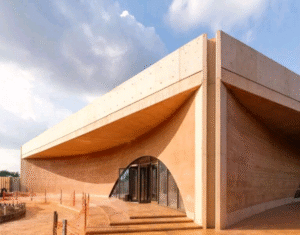
In a bold move to combat the escalating threats of climate-driven flooding and gully erosion, Mohammed Bawa Okoyomoh, Chief Executive Officer of the Edo State Flood, Erosion, and Watershed Management Agency (EdoFEWMA) and Project Coordinator for Edo State NEWMAP-EIB, has called for a transformative shift in addressing environmental challenges.
Speaking recently at a media briefing themed “From Vulnerability to Resilience: Empowering Communities to Combat Climate-Driven Floods and Gully Erosion,” Okoyomoh emphasized the critical role of community-led initiatives in building resilience against climate change impacts in Edo State.
Okoyomoh highlighted that climate change is intensifying land degradation through extreme weather events, particularly in areas like Edo State with fragile soil structures and high rainfall intensity.
“Climate models project increased frequency and intensity of rainfall events, leading to destructive floods and gully erosion that threaten farmlands, infrastructure, and lives,” he stated.
He identified poor land management practices—such as deforestation, improper waste disposal, and unsustainable farming—as key factors exacerbating these issues.
The briefing underscored a pivotal shift from government-centric interventions to community-led solutions. Okoyomoh stressed that while large-scale engineering projects are vital, communities are the first and most sustainable line of defense.
“The community possesses indispensable local knowledge of drainage paths, soil types, and vulnerable areas,” he said, noting that their engagement ensures the sustainability and success of climate adaptation projects.
Okoyomoh outlined practical, low-cost strategies to empower communities, which include, Planting deep-rooted local species and integrating trees with crops to stabilize soil and reduce runoff velocity.
Contour Barriers and Vetiver Grass: Using dense vegetation strips to slow water flow, filter sediment, and create natural terraces.
Drainage Maintenance: Clearing stormwater drains and gutters of debris to ensure free water flow during heavy rains.
Sustainable Farming Practices: Promoting no-till farming, cover cropping, and avoiding cultivation on steep slopes or drainage paths.
Rainwater Harvesting: Constructing water diversion banks, trenches, or small ponds to manage excess runoff, turning floodwater into a resource for dry seasons.
Okoyomoh urged the media to play a pivotal role in scaling awareness and inspiring action. He outlined key responsibilities such as;
Prioritize reporting on community-led prevention efforts rather than just post-disaster destruction, highlight stories of communities successfully implementing flood and erosion control measures, as well as use visuals, infographics, and clear language to explain the link between climate change, rainfall, and erosion.
Also, monitor and report on sustained government support for community initiatives, how local actions align with national and global climate strategies, positioning communities as partners in broader efforts, and showcase farmers adopting sustainable practices to protect land and livelihoods.
Another key responsibility of the media is to educate residents on the link between improper waste disposal and flooding, emphasizing their role in prevention.
Okoyomoh’s message was clear: “Climate resilience is built from the ground up.”
By empowering communities with knowledge, resources, and media support, Edo State aims to transform vulnerable areas into resilient hubs capable of withstanding climate challenges, and the media role in amplifying these efforts is crucial to inspiring widespread adoption of localized adaptation and ecosystem-based solutions.
As Edo State confronts the dual threats of flooding and gully erosion, this community-driven approach, backed by strategic media engagement, offers a blueprint for sustainable climate adaptation across Nigeria and beyond.







